On March 25, the Russians "congratulated" Ukrainians on SBU Day by launching a pair of 3M22 "Zirkon" anti-ship missiles in the center of Kyiv - 600 km from Crimea.
It is not a fact that the SBU itself was the target - there are other objects in the area where the rockets were aimed. Presumably, the Russians were interested in collateral damage in the historic center of the capital, which can be publicly presented as "decision-making centers" in light of Belgorod and the campaign of strikes on the refinery.
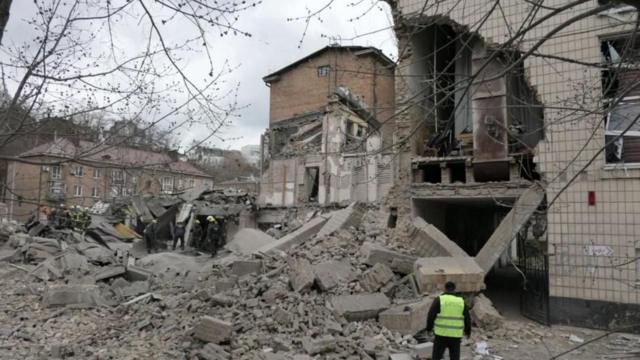
PHOTO AUTHOR, BBC
Then, the building of the Boychuk private gymnasium and Academy of Arts in Lypki was crushed by a kinetic impact, seven people were injured due to the debris and stress.
Real characteristics
The Russians are very fond of showing "Zirkons" in their propaganda videos, mentioning some frankly incredible characteristics about a speed of 9-10 mach, a range of 1000 km and a warhead (warhead) of half a ton.
And this with the dimensions of "Onyx", which has a warhead of 200-300 kg. In addition, "Zirkon" probably has two engines, which also requires space.
(The fact that "Zirkon" is a two-stage missile can be assumed from the analysis of the Kyiv Scientific Research Institute of Forensic Expertise, which made a schematic image based on the study of the wreckage of the first downed "Zirkon" in February. - Ed.)
And it doesn't happen like that - you have to sacrifice something to accommodate new opportunities in the same dimensions. Perhaps this was done precisely at the expense of the combat unit, if the stories that there are no 450 kg warhead "Zirkon" are true.
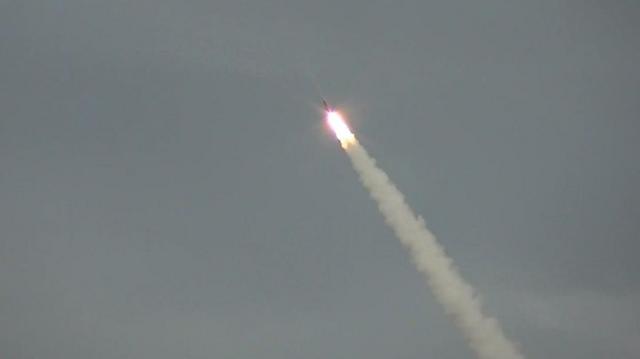
PHOTO AUTHOR, MINISTRY OF DEFENSE OF THE RUSSIA
March 25 was not the first case of the use of "Zirkons" - on February 7, this missile was already shot down and disintegrated into small parts.
That is, the PATRIOT RAS-3 complex twice intercepted the hypersonic classified weapon of the Russians, as it intercepted the "Daggers" before that. It turns out that the Raytheon Corporation (PATRIOT Manufacturer. - Ed .) can open champagne and wait for new contracts?
What do we already know about "Zirkon"?
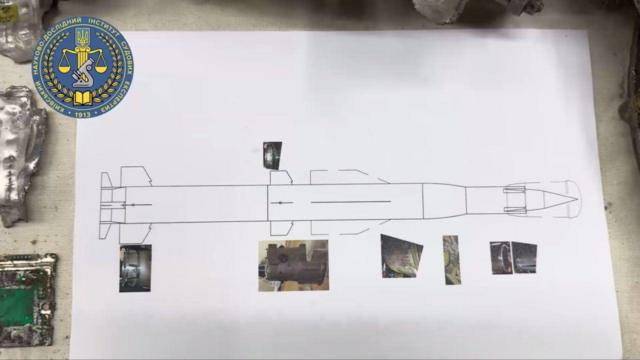
AUTHOR OF THE PHOTO, KNDISE Caption to the photo, This is what the "Zircon" looks like according to the version of the Kyiv Research Institute of Forensic Examinations after studying the wreckage of the rocket
First. Most likely, there are no 10 swings in her real TTX. And there may not even be 7 swings, and probably less.
(Defense Express estimates the speed of the "Zircon" on the main march section at 5.5 mach. - Ed .)
Direct-flow hypersonic engine (or Scramjet) has not been mastered by any country on the planet - neither China nor the USA - to a stable series of production.
And the Russians, in principle, did not conduct any real developments in this regard, if we do not take into account the "agitation" in the mass media. The same "Dagger" is a solid-fuel rocket, which is given an impulse at the initial stage, and then the speed decreases.
It's the same with "Zirkons" - they don't have a constant cruise speed, they have a direct-flow air-jet engine that allows them to reach hypersonic speed.
It's one thing to talk about 7.5 swings over the target in the media.
And it is quite another to really master the Scramjet, ensure a constant cruising speed and break through the anti-aircraft defense, which simply cannot have time to hit a ballistic target that is actively maneuvering in the high layers of the atmosphere. That is, he does not have time to calculate the meeting point, where the kinetic block will hit "Zircon" and make him deviate from the course or detonate in the air.
In the first case, beneficial for Russia, there would be large explosions on the ground and destruction in Kyiv's Podil - 400 kg of explosives would crush the windows in the entire quarter, along with the frames.
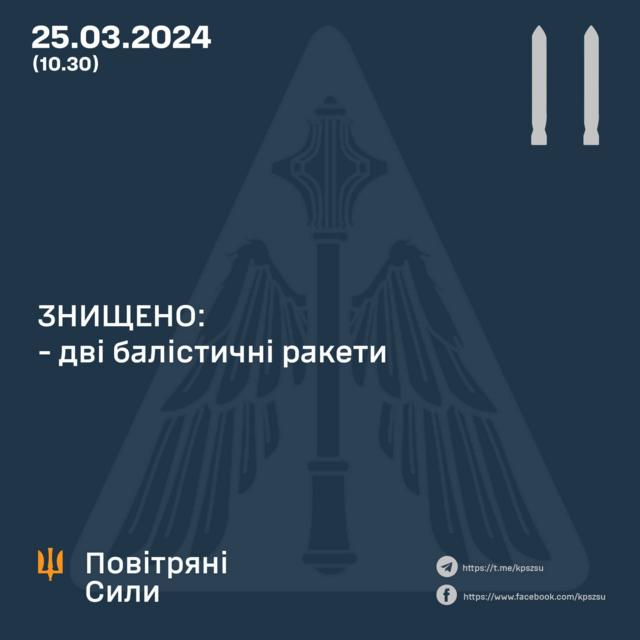
AUTHOR OF THE PHOTO, COMMAND OF THE AIR FORCES OF THE ARMY OF THE ARMY Caption of the photo, Report of the Air Force on the attack on Kyiv on March 25
As a result, we see downed Russian hypersonic anti-ship missiles worth up to 20 million dollars, whose debris damaged the art school.
Indeed, does it look like a technical achievement that "has no analogues"? Of course, it is shot down when there is a modern PATRIOT air defense system. If such a system does not close the city, then "Zirkon" could cause enormous destruction.
Why are "Zirkons" shot down?
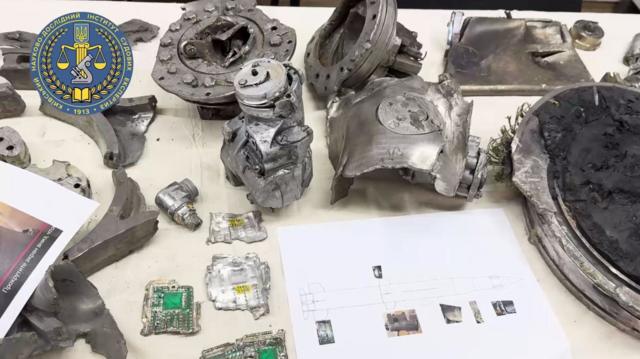
AUTHOR OF THE PHOTO, KNDISE Caption of the photo, Fragments of "Zirkona"
PATRIOT missiles of the PAC-3 version have their own homing head, so the interceptor missile in the final section looks for the target by itself, without its illumination by the locator, and forms a cloud of 24 tungsten rods that interrupt the rudders and crumple the body of the intercepted missile, throwing it aside for account of a strong kinetic impact.
As if a tennis ball had been hit.
Plus, there are constant software updates for American air defense systems, now PATRIOT actively uses the PDB 8.1 interface - this is computer calculations and a new 3D environment that visualizes the attack.
In general, all 13 German PATRIOT batteries, from which part of these air defense systems Ukraine received, were upgraded to PAC-3, so that the "Patriots" of the Armed Forces of Ukraine are all quite new - with the ability to simultaneously hit both ballistic and aerodynamic targets.
Where and how did "Zirkons" start?
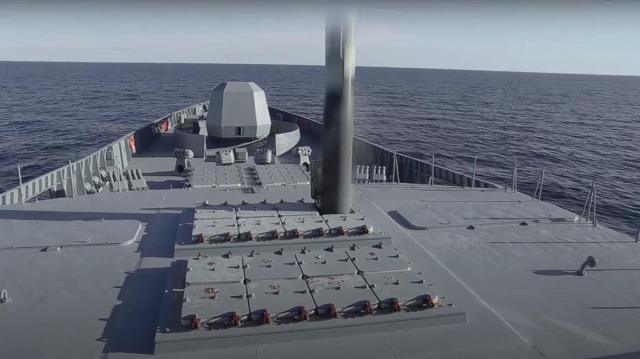
PHOTO AUTHOR, MINISTRY OF DEFENSE OF THE RUSSIA Photo caption, "Zirkoniv" carriers are far from the coast of Ukraine
There are no ships that can launch "Zirkons" in the Black Sea - all such ships are assigned to the Northern Fleet of the Russian Federation.
Therefore, the main option is that they were fired from the Crimea from Onyx ground installations, which were upgraded to work with the new system, or from prototypes of the regular ground system created under the actual "Zircony".
As with any anti-ship missile, Zircons must have a homing radar head - to "capture" a large metal target.
But you can't hit objects in cities like that - everything there is big and with masses of metal. Therefore, the "Zirkons" launched in Kyiv probably only had active satellite and inertial guidance.
And this means the possibility of spoofing and other radio-electronic interference, as well as not so much "surgical accuracy" of hits.
How dangerous are they?
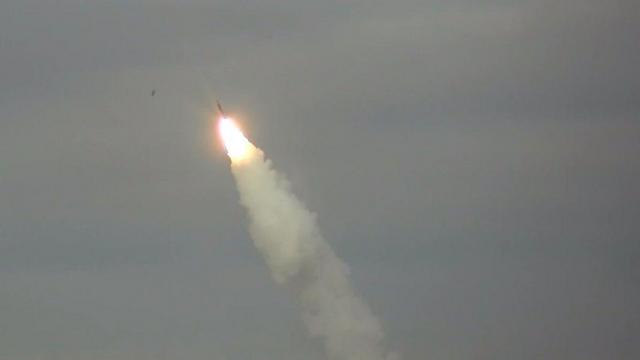
PHOTO AUTHOR, MINISTRY OF DEFENSE OF THE RUSSIA
There is definitely a threat from "Zirkony".
Apart from Kyiv and several other regions, anti-missile defense in Ukraine is not deployed on a sufficient scale.
And interceptor missiles are expensive - depending on the iteration, their cost reaches 5-8 million dollars.
But it is not necessary to constantly shoot expensive hypersonic missiles at the Russians - "Iskander" is enough.
In principle, the situation for Ukraine is reminiscent of Israel and the Persian Gulf in the 1990s, when Iraq launched ballistic missiles "Scudas" and "Elbrus" - interception is possible, but often debris still falls on cities. Plus, the approach time of 2-3 minutes for evacuation is clearly not enough.
And sooner or later, the Kremlin regime may try to organize a simultaneous flight of "Onyx", "Daggers" and "Iskanders" in order to overload the Defense Forces' ABM channels.
But Ukraine has dozens of mines (including those closed in the Lviv and Dnipropetrovsk regions), former command posts of strategic missile forces, air defense and other rear facilities in several districts of the USSR, which can be turned into isolated islands, with sufficient protection even against such strikes .
There are catacombs and underground structures in Odessa and Kyiv.
There are subway networks (with abandoned tunnels), various technical floors and bunkers of anti-nuclear protection inherited from the USSR (in fact, no one really goes there anymore during alarms).
Most of this cannot be penetrated even by tactical nuclear weapons, let alone hypersonic missiles with 200-kilogram warheads, of which 60-80 kg are actual explosives.
Hiding important objects for industry and management there is the main way to fight hypersonic missiles.
And also - decentralization, when, for example, the lathe and the place for equipping mines will be separated from each other and hidden in dozens of empty shops.
Under such conditions, no matter what "Zirkon" hits, it will be cheaper than this rocket itself.
Today, the Defense Forces are intercepting the most modern Russian missiles over Kyiv.
So the challenge for the future is to scale such results to large industrial centers and disperse everything that can be dispersed.

